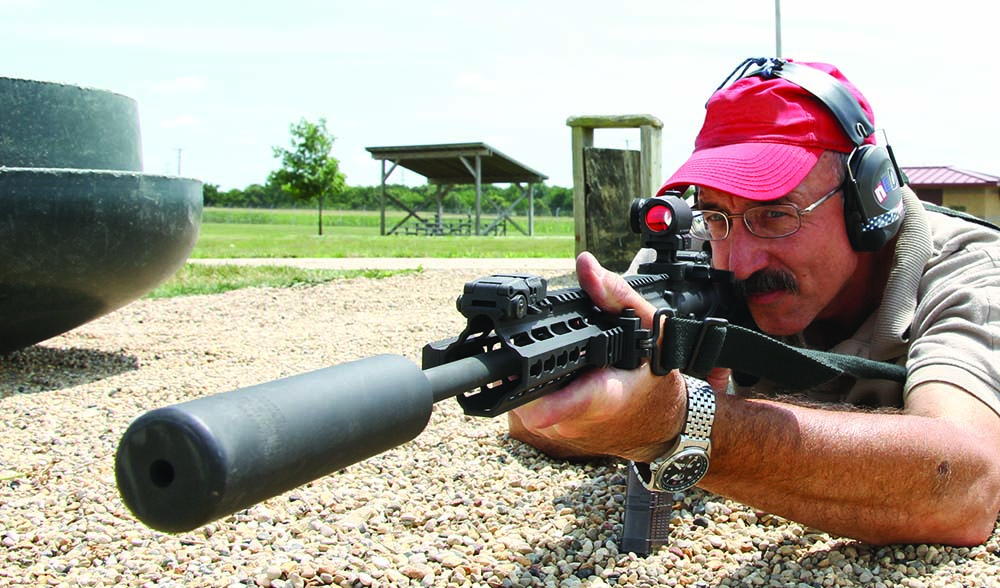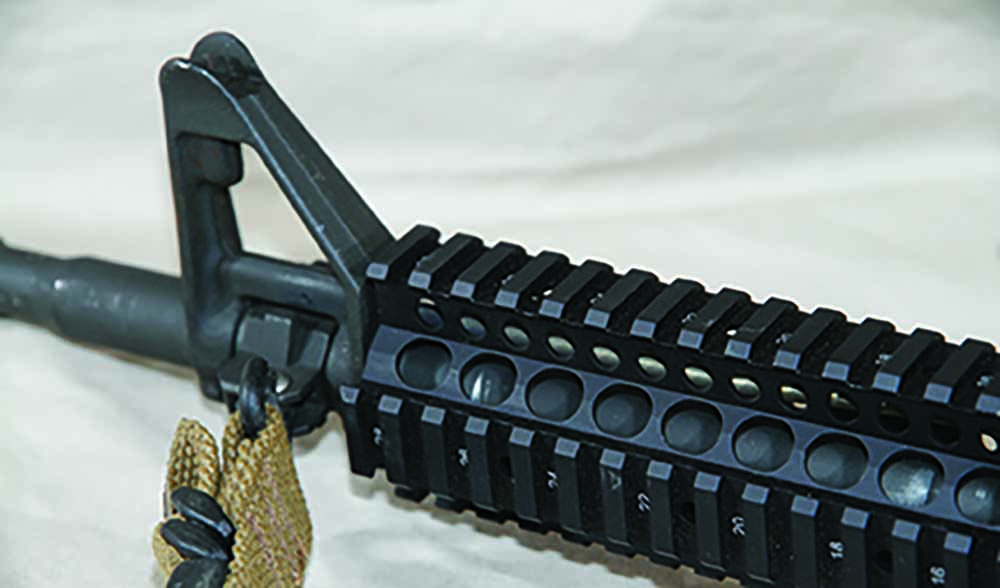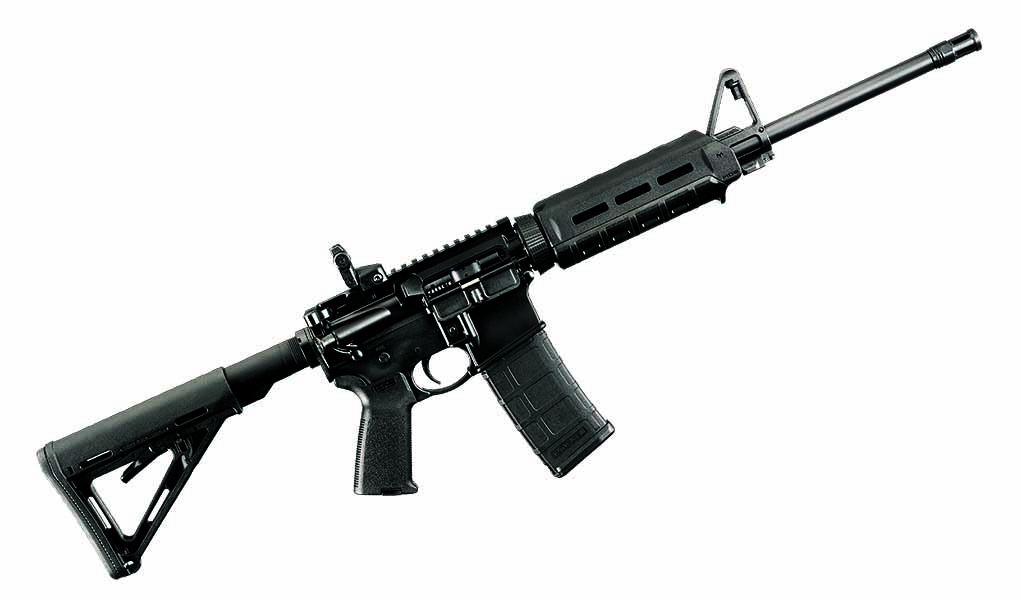
Finding the best AR-15 to suit your needs is simple, if you know what you're looking for.
What aspects of the AR-15 do you need to consider when you buy:
It took a while, but all your friends have an AR-15, and now you’re finally determined to pull the trigger. (OK, we start with a pun. That’s the way it’s going to be?) But, they are everywhere. And they’re made by everybody. What to do? How to choose?

Before we dive into the details, may I make a suggestion? Make your first AR-15 (there will likely be others later on) a relatively “normal” AR? It will be a pretty steep learning curve as it is, and adding in exotica may be overwhelming.
Caliber
First, decide what you want in caliber. A vanilla-plain .223 Rem./5.56 NATO? That’s the easy choice, because ammunition and magazines are everywhere. Also, plain old .223 Rem. is the least expensive of the ammo choices for the AR. However, if you want something in another caliber, just be sure you’re picking for the right reason. Do not buy an AR — say .204 Ruger — expecting to be able to find ammunition appropriate for defensive use.
Size
Second, decide on size. An AR that might be used for hunting as well as range fun and occasional competition can be larger and heavier than one you keep in your car for travel defense. Weight factors into this. If you’re 5 feet, 8 inches tall, don’t buy a bull-barreled rifle-length AR if your plans are for anything other than sitting at a bench and punching small groups on targets. Hauling that to the hunting blind, or running through a 3-gun match with it, will more than dampen your enthusiasm.
Barrel Length
An aspect of size is barrel length. Your two real choices are rifle length (20 inches) or carbine length (16 inches). The 16-inch barrel will deliver all the velocity you’ll need or want. If you must have the extra 100 fps, then accept the extra length. Shorter than 16 inches is handy, but it comes with extra costs: the cost of the tax stamp in order to make it an SBR. (Unless you go the AR pistol route, but that’s a divergence from this briefing.) You also pay in velocity loss, noise gain and just a bit more recoil.

Stock
Third, what stock? If you want a lightweight house gun or truck gun, then you’ll opt for a tele-stock. Which particular one is a matter of comfort — if comfort matters. Some people don’t find any particular one more or less comfortable than the rest.
The great thing about the AR is that stocks can be changed. If you have a tele-stock, you can swap off the sliding part for another one. Try them. Swap them. Even the “expensive” ones aren’t very costly.
Sights
Last we have sighting systems. Will there be a scope in your AR’s future? If so, you simply must get a rifle or carbine with a flat-top receiver. If your plans are for iron sights only, you can install folding (or non-folding) irons on your flat-top, or select an AR with fixed iron sights, just like in the old days.
Grips
Pistol grips are so personal, so inexpensive — and so much a fashion as well as a comfort item — that you can pick and choose. Pistol grips are easy to change, so we won’t worry about those. Shoot what you like.
What’s left are handguards — or forearms, if they’re cantilevers.

Handguards: Fancy Vs. Function
The handguard is the part that keeps the hot barrel away from your hands. They used to all be triangular or cylindrical pieces of plastic, slipped under brackets front and rear. Now, they’re attached to the upper receiver at their back end and don’t touch the barrel at all. Or, they clamp on to, or replace, the barrel nut — and again, not touching the barrel at all. These are free-float handguards, and they allow your barrel to be all it can be.
Everyone makes an AR-15 with free-float handguards, and unless you are determined to go “retro,” you’ll have to make decisions.
First choice: quad rail or not? The quad rail is one with a rail section, not unlike the old Weaver rail, on each of the four cardinal points of the handguard. The advantage is simple: You have full freedom in bolting on accessories. The cost is also simple: The quad rail weighs more, and is larger in size, than the non-quads. I have big hands, and yet I dislike quad rails. If your hands are average, you may find it just too big. Non-quad handguards are much slimmer and lighter.
And here we have another decision point: The non-quads use slots in the handguard tube as attachment points for your accessories. There are two competing designs, and they’re not compatible with each other. Those are Key-mod and MLok.

Key-mod was the first, but MLok has advantages, and it has been winning the rail wars. There are still plenty of accessories made for Key-mod handguards, and there will be for a long time. So, if you find a smokin’ hot deal on a rifle with Key-mod, buy it.
Barrel Twist
Another choice: barrel twist. This is a different detail than weight or length. The twist is the speed of rotation of the rifling to rotate the bullet, denoted in how many inches it takes to make one complete revolution, as a fraction. So, a 1/7 barrel completes a turn in 7 inches, a 1/9 in 9 inches, and so-on.
You have three choices, only two of which actually matter. The original twist, 1/12, cannot stabilize a bullet heavier than about 60 grains. And no, the 62-grain “green tip” is not close enough. If you have a 1/12 barrel and green tip ammo, accuracy will be worse than miserable out to 25 yards. Past there it will be non-existent.
You will be told that “real men” only opt for a 1/7 barrel because that’s what mil-spec dictates. Meh. A 1/9 barrel will shoot even the heavy military ammo with 75- or 77-grain bullets well. If you must have a 1/7 barrel, fine. But if you get a deal on a 1/9, don’t pass it up.

Twists faster than 1/7 are the province of long-range target shooters who will be firing bullets of 80, 90 and even 100 grains. This is not you.
Construction Material
What steel? Chrome-lined, Melonite or stainless-steel? For the new shooter, they’re all good. They will all last you 10,000 rounds of fun shooting. If you can get a better barrel for not much money (and you have to decide how much is “not much”), then do it. Otherwise, don’t worry.
Assessing Overall Quality
Now, look at the details of the actual build — the actual rifle or carbine in front of you.
Once you’ve made sure it isn’t loaded, check the fit of the upper to the lower. Gone are the days when ARs left the factory wobbly. Everyone expects a tight fit, and makers know this. If the upper wobbles on the lower, hand it back and try the next one. If the fit is tight, on to the next step.

Fixed stocks are not a problem. If they seem loose, a bit of work with a screwdriver will tighten it up. With a tele-stock, look at the ring around the buffer tube, right behind the receiver. This is called the “castle nut.” The castle nut will have notches in it. The larger of the notches must be to the rear. They are what the assembler used to tighten the castle nut, which secures the rear plate and tube in place. I’ve seen them with the small notches to the rear, and I can’t imagine how they even got them tight, let alone passed final inspection before being shipped.
On the front of that ring, in the small notches, the edge of the receiver plate should be staked into the notches. This is done with a spring-loaded punch, or a chisel and hammer, to make sure the castle nut can’t loosen. The staking can be aggressive or marginal, but it must be done. If there’s no staking, hand the rifle back and most likely knock that brand off of your list.
As an aside, the buffer tube itself can come in one of two diameters: mil-spec and commercial. You’ll need to know which you have if you go to replace the slider, but otherwise not. The precise way is to measure with dial calipers. Mil-spec tubes measure 1.148 inches and commercial measures 1.168 inches. They can have four, five six or even seven stops for length adjustment. Look at the threads on the tube. If the threads behind the castle nut have been machined down, it’s a mil-spec tube. If the threads are sharp-topped all the way back to their end point, it’s a commercial tube.
Open the action. Pull the bolt and carrier out of the upper receiver. You’re going to check two things: one on the carrier and one on the receiver.

On the carrier, look at the gas key on top. There are two bolts holding it on. Just like the castle nut, these screws have to be secured in place via staking. There’s no such thing as an elegant, secure staking job. The more mangled the top of the key looks, the better-staked it probably is. Un-staked? Pass on this one. An un-staked carrier key is worse than an un-staked castle nut. It will work loose, and your rifle will malfunction as a result.
Now, you could buy a rifle or carbine that has nothing staked and do the staking yourself, but they’re signs that the maker has cut corners. Who knows what else they left un-done or did cheaply. A good enough bargain makes it worth the risk — once you know what you’re doing.
Finally, peer down at the chamber. Look under the locking lugs of the barrel extension and see if the feed ramps extend down into the aluminum portion of the receiver. These are known as “M4” ramps. You want them, even on a rifle. They increase reliability. They’re essential on a carbine and good on a rifle.
You’ve not got the best chances of buying a well-built rifle or carbine, with the features you want the details you must have. Be sure and stock up on magazines and ammo, and find a gun club where you can fully wring out the capabilities of you and your rifle.
Editor's Note: This article originally appeared in the 2018 Shooter's Guide issue of Gun Digest the Magazine.

Next Step: Get your FREE Printable Target Pack
Enhance your shooting precision with our 62 MOA Targets, perfect for rifles and handguns. Crafted in collaboration with Storm Tactical for accuracy and versatility.
Subscribe to the Gun Digest email newsletter and get your downloadable target pack sent straight to your inbox. Stay updated with the latest firearms info in the industry.

![Best Concealed Carry Guns In 2025 [Field Tested] Wilson Combat EDC X9S 1](https://gundigest.com/wp-content/uploads/Wilson-Combat-EDC-X9S-1-324x160.jpg)


![Best 9mm Carbine: Affordable PCCs [Tested] Ruger Carbine Shooting](https://gundigest.com/wp-content/uploads/Ruger-Carbine-Shooting-100x70.jpg)
![Best AR-15: Top Options Available Today [Field Tested] Harrington and Richardson PSA XM177E2 feature](https://gundigest.com/wp-content/uploads/Harrington-and-Richardson-PSA-XM177E2-feature-100x70.jpg)
